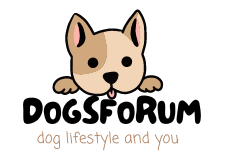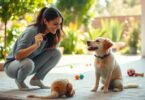Have you ever wondered what it takes to raise a well-behaved and loyal companion? The key to a strong bond with your new pet lies in effective puppy training. Early training not only prevents behavioral issues but also sets the stage for more advanced skills later on.
Basic puppy training focuses on essential commands like “sit,” “come,” and “stay.” These foundational skills create a framework for better communication and understanding between you and your pet. This guide is designed to provide expert advice and step-by-step instructions to help you navigate the process smoothly.
In the following sections, we’ll explore everything from housebreaking to socialization, ensuring you’re equipped with the knowledge to empower your puppy’s growth. Whether you're a first-time owner or looking to refine your approach, this comprehensive guide offers practical, scientifically-backed strategies to enhance your puppy’s well-being through education.
By the end of this guide, you’ll understand how to create a structured routine, use positive reinforcement effectively, and address common challenges. Let’s get started on this journey to raising a happy, healthy, and well-trained puppy!
Understanding the Basics of Puppy Training
Starting your journey with a new pet can be both exciting and challenging. Establishing a strong foundation through early education is key to helping your dog grow into a well-adjusted companion. This section explores the fundamentals of training and how setting clear objectives can lead to long-term success.
Why Early Training is Crucial
Research shows that puppies as young as 8 weeks old can begin learning basic commands. Early training is vital because it shapes behavior and prevents unwanted habits from forming. By introducing simple commands like “sit” and “stay,” you create a strong foundation for more complex behaviors later on.
Consistency and positive reinforcement are essential during these early stages. Rewarding good behavior with treats or praise encourages your dog to repeat those actions. This method not only speeds up the learning process but also strengthens the bond between you and your pet.
Setting Clear Goals for Your Puppy
Setting achievable goals tailored to your puppy's age and development is crucial. For instance, younger puppies may focus on basic commands, while older ones can gradually learn more complex tasks. Breaking down training into manageable steps ensures steady progress without overwhelming your pet.
Aligning your expectations with your puppy's capabilities helps maintain a positive learning environment. Celebrate small victories, as they build confidence and motivation for both you and your dog. Remember, every milestone brings you closer to raising a well-behaved and loyal companion.
Effective “puppy training tips” for New Owners
Welcoming a new puppy into your family is an exciting experience, but it comes with its own set of challenges. Choosing the right tools can make the training process smoother and more effective. This section will guide you in selecting the best equipment to help your new puppy learn and grow.
Choosing the Right Leash
A good leash is essential for walks and outdoor training. Opt for a durable, comfortable leash that suits your puppy's size and breed. Avoid very long leashes, as they can be difficult to manage, especially for new owners.
When selecting a leash, consider the material. Leather or nylon leashes are popular choices because they are sturdy and easy to clean. A standard 4-6 foot leash is ideal for everyday use, providing enough freedom for your puppy without causing control issues.
Selecting Suitable Toys
Toys play a crucial role in keeping your puppy entertained and engaged during training sessions. Choose durable toys that can withstand chewing and rough play. Interactive toys, such as puzzle toys, can help stimulate your puppy's mind and reduce boredom.
Soft plush toys are great for cuddling and can serve as rewards during training. However, avoid toys with small parts that can be easily detached and pose a choking hazard. Always supervise your puppy during playtime to ensure safety.
Using Treats Effectively
Treats are a powerful tool in positive reinforcement training. Choose small, tasty treats that your puppy finds irresistible. Use them sparingly to reward good behavior, such as sitting or staying, to avoid overfeeding.
Consider using low-calorie treats to keep your puppy healthy and focused. You can also use your puppy's regular kibble as rewards during training sessions. The key is to find what motivates your puppy the most and use it consistently.
Training Tips for New Owners
Consistency is key when it comes to training. Establish a routine and stick to it, ensuring that all family members are on the same page. Use clear, positive commands, and avoid punishment or negative reinforcement.
Keep training sessions short and fun to maintain your puppy's attention. End each session on a positive note while your puppy is still engaged. This will help build a strong foundation for future training.
Housebreaking and Potty Training Strategies
Mastering potty training is one of the most important steps in raising a well-behaved dog. Establishing a consistent routine helps your pet understand when and where to go, making life easier for both of you.
Creating a Consistent Potty Schedule
A structured schedule is the cornerstone of successful potty training. Puppies thrive on routine, so take your dog outside immediately after meals, naps, and play sessions. For example, a 4-month-old puppy can typically hold their bladder for about 5 hours, so frequent breaks are essential.
Start by taking your puppy outside every hour, especially after meals and playtime. This helps them learn to associate specific times with the need to go. Over time, you can gradually extend the intervals as they grow older and gain better control.
Managing Accidents Effectively
Accidents are inevitable, but how you handle them matters. If your puppy has an accident in the house, calmly clean up the area with an enzymatic cleaner to remove any lingering scents. Avoid punishing your dog, as this can create anxiety and hinder the learning process.
Supervise your puppy closely, especially in the early stages. If you notice signs like sniffing or circling, quickly take them to the designated potty area. Consistency and patience are key to minimizing accidents and reinforcing good habits.
By sticking to a structured routine and staying vigilant, you can help your dog learn to go potty outside where they belong. Remember, every successful trip outside is a step toward a cleaner home and a happier relationship with your pet.
Mastering Crate Training Techniques
Crate training is a powerful tool that helps create a safe and calm environment for your dog. By providing a den-like space, it taps into their natural instinct to seek cozy, enclosed areas. This method not only aids in house training but also reduces separation anxiety and prevents destructive behavior when you're not home.
Selecting the Perfect Crate
Choosing the right crate is essential for effective crate training. The crate should be just large enough for your dog to stand up, turn around, and lie down comfortably. Avoid crates that are too spacious, as your dog may use one end for sleeping and the other for bathroom needs. Opt for durable materials like metal or high-quality plastic, which are easy to clean and provide a sense of security.
Gradual Introduction to the Crate
Introducing the crate gradually is key to a positive experience. Start by placing treats or a favorite toy inside to entice your dog to explore it willingly. Once they're comfortable entering, close the door while you're in the room, offering a treat to keep them calm. Gradually increase the time spent in the crate, always beginning with short periods and never leaving your dog unattended.
Rewards play a crucial role in crate training. Use treats to reinforce positive behavior, making the crate a welcoming space. For example, a KONG toy filled with frozen peanut butter can keep your dog occupied and happy while inside.
To get started, place the crate in a high-traffic area where your dog feels safe. Begin with short sessions, such as 10 minutes, and slowly extend the duration. Always supervise your dog during these initial phases to ensure their comfort and safety. By following these steps, you'll help your dog view the crate as a positive, calming space.
Implementing Reward-Based Methods for Success
Reward-based training is a cornerstone of modern dog education, focusing on encouraging desired behaviors through positive outcomes. This approach not only fosters a strong bond between you and your dog but also creates a motivating learning environment.
Using Treats and Positive Reinforcement
Positive reinforcement is a powerful tool where desired actions are rewarded, prompting your dog to repeat those behaviors. Treats, praise, and affection are key motivators. For instance, offering a treat when your dog sits ensures they associate the action with a positive outcome.
Timing is crucial. Rewards should be given immediately after the desired behavior to help your dog understand what action is being reinforced. Using a clicker or whistle as a marker can enhance this process, signaling the exact moment they perform correctly.
The Role of Consistency in Reinforcement
Consistency is vital for effective training. Everyone involved should use the same commands and rewards to avoid confusing your dog. For example, using a specific treat for “sit” helps them recognize and replicate the action consistently.
Reward-based methods are backed by research, showing they are effective for all dogs, including those with behavioral challenges. This approach reduces anxiety and fear, fostering a trusting relationship between you and your dog.
By integrating reward-based techniques, you create a positive, effective training environment. This method not only enhances learning but also strengthens your bond, helping your dog become a well-behaved companion.
Socialization: Building a Confident Puppy
Socialization is a cornerstone of raising a confident and well-adjusted dog. It helps your pet navigate the world with curiosity and calmness, reducing the risk of fear-based behaviors. By introducing your dog to new environments, people, and other animals, you set the stage for a lifetime of positive interactions.
Introducing New Environments Safely
Start by exposing your dog to familiar environments before moving to new ones. Use positive cues like treats and praise to make the experience enjoyable. Gradual exposure to different surfaces, noises, and situations helps build confidence and reduces anxiety.
Encouraging Positive Interactions
Supervise interactions with other dogs and people to ensure they are positive. Consistent cues reinforce good behavior and help your dog understand what’s expected. Professional trainers can offer tailored strategies to enhance socialization efforts, ensuring your dog thrives in various settings.
Remember, socialization is an ongoing process. With patience and consistency, you can help your dog become a confident companion ready to embrace the world.
Basic Command Training: Sit, Stay, and More
Building a strong foundation with basic commands is essential for every dog's development. These commands not only improve communication but also strengthen the bond between you and your dog. In this section, we'll explore how to teach fundamental commands like “sit” and “stay,” and how to develop reliable recall cues.
Teaching the Sit Command Effectively
Teaching your dog to “sit” is a great starting point. Begin by holding a treat above your dog's head. Move the treat backward and upward, towards their tail. As they follow the treat with their nose, they'll naturally lower into a sitting position. The moment they sit, say “sit” and give them the treat.
Repeat this process several times a day, ensuring short, focused sessions. Gradually phase out the treat, using the command alone. Consistency is key, so make sure everyone in the household uses the same command and reward system.
Developing Recall and Stay Cues
Once your dog has mastered “sit,” you can move on to “stay.” Start by having your dog sit, then take a few steps back while saying “stay.” Return quickly, reward them, and repeat. Over time, increase the distance and duration before rewarding.
For recall, use a consistent cue like “come” in a happy, upbeat tone. Start in a quiet area with few distractions. When they respond, reward them with treats or praise. As they become more reliable, introduce distractions and different environments.
Remember, practice should be short and fun. End each session on a positive note while your dog is still engaged. With patience and consistency, these commands will become second nature for your dog.
Daily Routine and Scheduled Training Sessions
A well-structured daily routine is essential for your pet's development. It helps create a sense of stability and ensures that your dog receives the attention and care they need. By organizing your time effectively, you can balance learning with play, making the experience enjoyable for both you and your pet.
Balancing Playtime with Learning
Each training session should be short and engaging. For young dogs, sessions lasting 5-10 minutes are ideal, while older pets can focus for up to 15 minutes. Schedule these sessions throughout the week, ensuring consistency. This approach prevents overwhelming your pet and keeps them eager to learn.
Playtime is equally important. It not only strengthens your bond but also provides exercise. Short, frequent play sessions are more beneficial than one long period. This balance keeps your pet energized and receptive to learning.
Consistency is key. Maintain regular times for meals, potty breaks, and sleep. This routine reduces accidents and encourages good behavior. As your pet grows, adjust the schedule to meet their changing needs, gradually increasing training session duration and complexity.
By following a structured routine, you create a nurturing environment that supports your pet's growth. This balance of learning and play ensures a happy, well-adjusted companion.
Advanced Puppy Training for Behavior Challenges
As your dog grows, they may face new challenges that require advanced strategies. These issues can arise during social interactions or when encountering distractions. Addressing these problems early ensures your pet remains well-behaved and confident.
Managing Distractions During Training
Distracting environments can hinder learning. Start by exposing your dog to minor distractions, like other people or animals, and reward calm behavior. Positive reinforcement, such as treats, helps maintain focus. Over time, increase the intensity of distractions to build resilience.
Refining Leash and Social Behavior
Leash manners are crucial for enjoyable walks. Train your dog to walk beside you without pulling by using rewards for calm behavior. In social settings, teach your dog to interact politely with others, ensuring they remain composed and respectful.
Consistent reinforcement and gradual progression to more complex exercises are key. With patience and the right techniques, your dog can overcome challenges and thrive in various situations. Remember, every small step forward is a victory on the path to advanced training.
Wrapping Up Your Training Journey
As you conclude your journey through this comprehensive guide, remember that raising a well-behaved and confident pet is a lifelong commitment. The strategies and techniques discussed here provide a solid foundation, but consistent practice and patience are key to long-term success.
To maintain a supportive environment at home, ensure all family members are aligned on training methods and rewards. Celebrate small victories, as they build motivation and reinforce positive behaviors. Over time, your pet will grow into a loyal and well-adjusted companion.
Stay dedicated to refining your approach and adapting to your pet's needs. With persistence and the right techniques, you'll unlock the lifelong benefits of a well-trained, confident pet. Every effort you make today will shape a brighter, happier future for your furry friend.











Leave a Comment